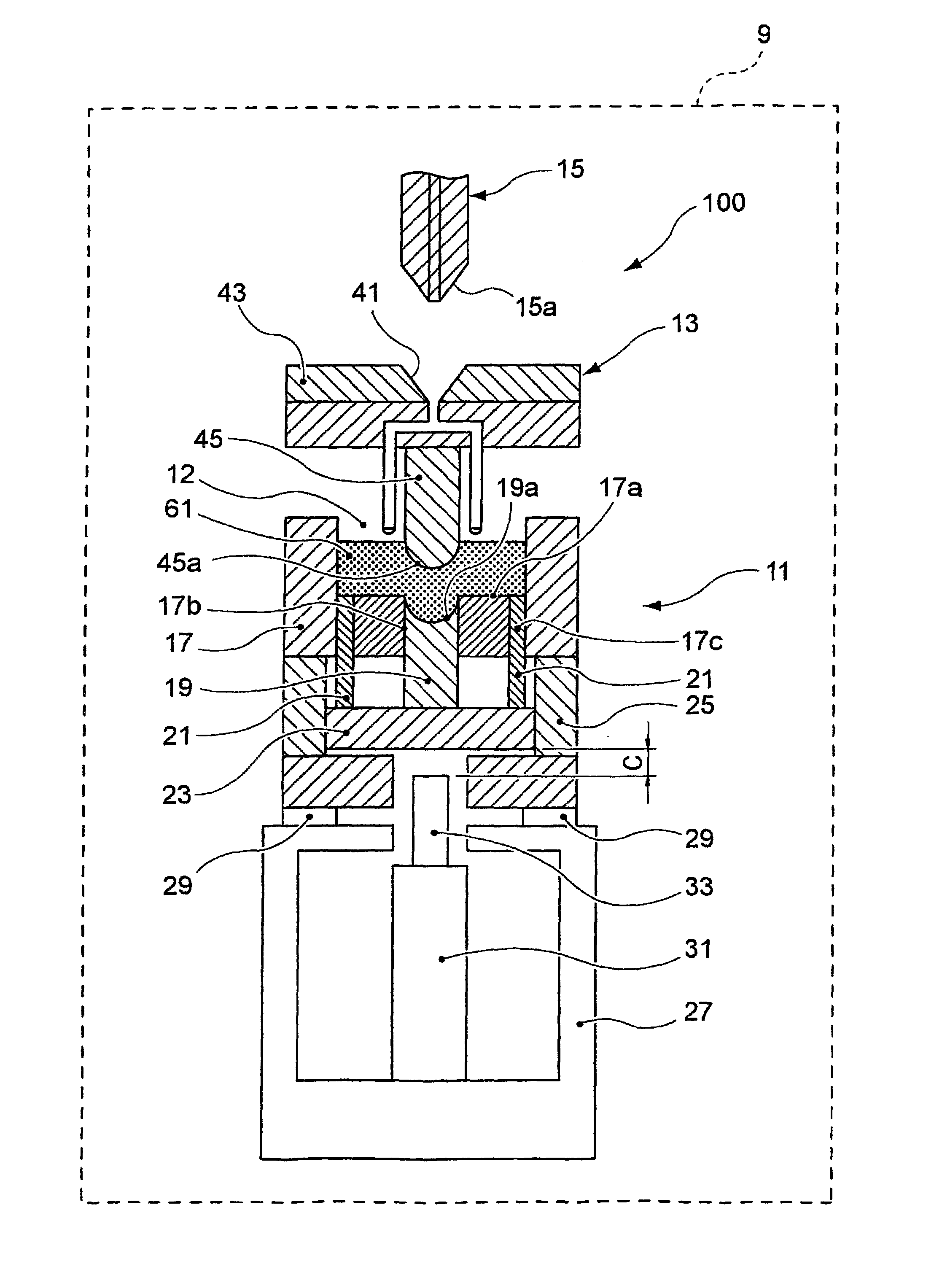Method for molding optical member, apparatus for molding optical member and optical member
a technology of optical components and molding methods, applied in the direction of dough shaping, manufacturing tools, instruments, etc., can solve the problems of difficult injection molding, poor flowability of nanocomposite resin, failure to obtain transparent optical components with constant dispersion density, etc., and achieve stable optical characteristics
- Summary
- Abstract
- Description
- Claims
- Application Information
AI Technical Summary
Benefits of technology
Problems solved by technology
Method used
Image
Examples
Embodiment Construction
[0039]Exemplary embodiments of the method and apparatus for molding an optical member of the present invention are described in detail below by referring to the drawings.
[0040]FIG. 1 is a longitudinal cross-sectional view showing a rough construction of an optical member molding apparatus according to an exemplary embodiment of the present invention, and FIG. 2 is an explanatory view schematically showing steps through which an optical member is molded from a nanocomposite resin-containing solution by the optical member molding apparatus shown in FIG. 1.
[0041]As shown in FIG. 1, the optical member molding apparatus 100 includes a vessel-like lower mold 11, a convex upper mold 13 and a dispenser device 15 and is arranged in a drying chamber 9. The vessel-like lower mold 11 includes an approximate cylindrical vessel 17 open to the outside at an open-to-atmosphere surface (an opening to an atmosphere) 12 provided on the top, a core 19 capable of slidably fitting into a core hole 17b pr...
PUM
| Property | Measurement | Unit |
|---|---|---|
| particle size | aaaaa | aaaaa |
| temperature | aaaaa | aaaaa |
| diameter | aaaaa | aaaaa |
Abstract
Description
Claims
Application Information
 Login to View More
Login to View More - R&D
- Intellectual Property
- Life Sciences
- Materials
- Tech Scout
- Unparalleled Data Quality
- Higher Quality Content
- 60% Fewer Hallucinations
Browse by: Latest US Patents, China's latest patents, Technical Efficacy Thesaurus, Application Domain, Technology Topic, Popular Technical Reports.
© 2025 PatSnap. All rights reserved.Legal|Privacy policy|Modern Slavery Act Transparency Statement|Sitemap|About US| Contact US: help@patsnap.com



